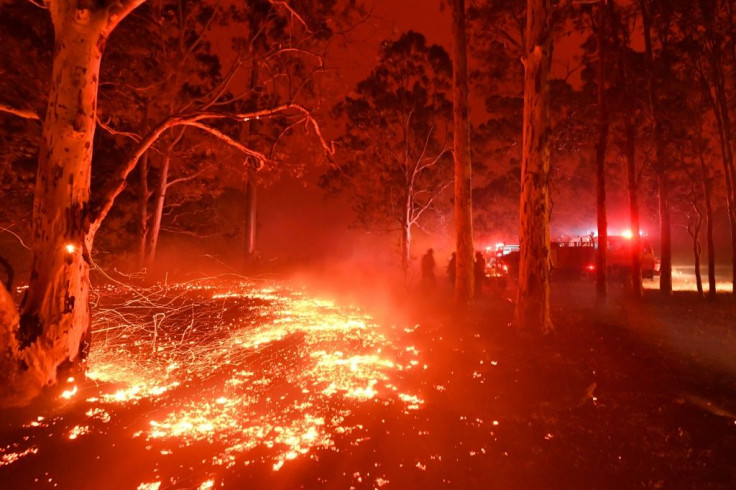Australia Bushfires Map: New South Wales, Victoria Fires Ravage, Death Toll Hits 18

KEY POINTS
- Australia bushfires in New South Wales and Victoria are escalating
- Fire Service warned tourists camping on the South Coast of New South Wales to leave
- Temperatures are expected to hit 40C in the weekend
Australian bushfires are showing no signs of respite in New South Wales and Victoria. So far 18 people have died in the fire season that started in September.
According to an update by the New South Wales Rural Fire Service, 916 homes have been destroyed in this season and 363 houses suffered damage. Temperatures are expected to hit 40C in the weekend, exacerbating the tight conditions in fire-ravaged Victoria and New South Wales.
Since Monday, seven people have died, one is missing, and 382 properties have been destroyed in the fires in southern NSW and the South Coast, the Sydney Morning Herald noted.
Bushfires in Australia escalated this week as blazes hit communities in NSW and Victoria. On Thursday, long lines of cars were seen clogged in highways filled with people who abruptly called off their holidays.
The New South Wales Rural Fire Service (NSWRFS) on Wednesday issued a warning to tourists camping on the South Coast of New South Wales. It asked tourists to leave before Saturday considering the dangerous conditions expected over the weekend.
Tourist Leave Zone – South Coast Bush Fires
— NSW RFS (@NSWRFS) January 1, 2020
Dangerous conditions for holiday makers on the South Coast of NSW this weekend
With the widespread power and communications outages across the South Coast please share this information to as many affected people as possible. #nswrfs pic.twitter.com/JvbwrpC1fe
Per meteorologists, extreme heat in Australia is being caused by a climactic phenomenon “dipole” in the Indian Ocean.
Slight improvement in Victoria
Meanwhile, a BBC report said the conditions have slightly improved in Victoria and a major road was reopened for two hours Wednesday to allow people to leave.
However, it also added many people are trapped in fire-hit areas. In Mallacoota, Victoria police managed to supply 1.6 tons of drinking water by boat along with food and medical supplies.
Police urged people in Sunbury, Victoria to leave after an emergency fire warning was issued.
New South Wales Premier Gladys Berejiklian on Wednesday directed workers to take advantage of the milder weather to clear roads and restore power. However, she warned temperatures might rise again on Saturday.
More than 50,000 residents on the New South Wales coast are without power and many towns have no access to clean drinking water.
Firefighters have been struggling to contain the massive blazes as record temperatures and the prolonged drought have worsened the situation. Although fires have hit every Australian state, NSW was the worst hit.
The affected regions of Australia include wooded areas, national parks like the Blue Mountains, and outer suburbs of big cities Melbourne and Sydney where fires struck homes and thick plumes blanketed the urban center.
© Copyright IBTimes 2024. All rights reserved.





















